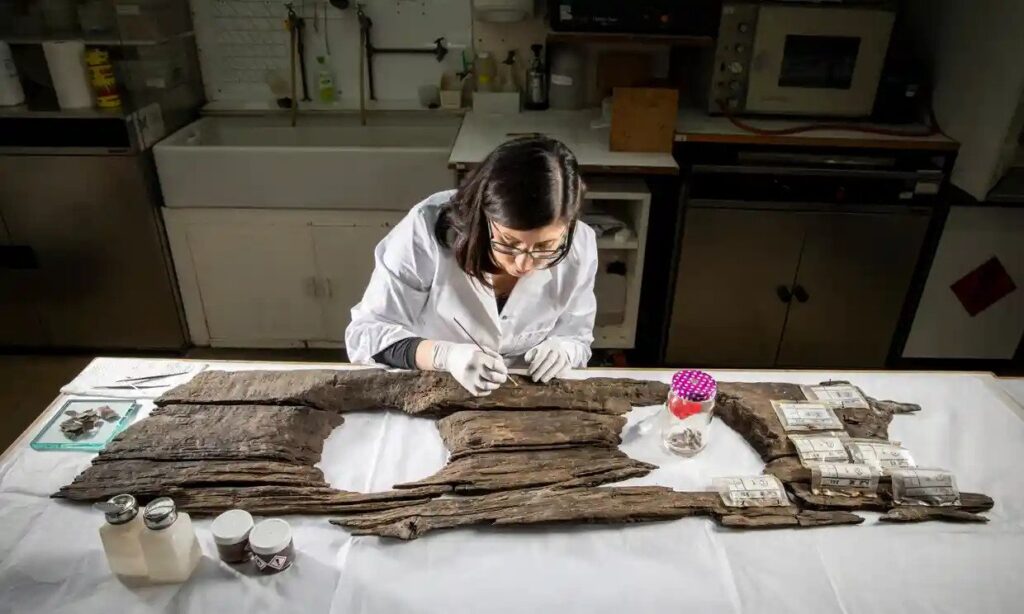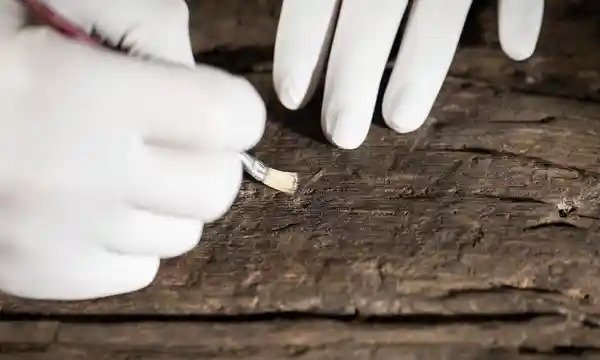Helle’s Toilet: Three-Person Loo Seat was Unusual Medieval Status Symbol
A rare 12th-century toilet seat built to accommodate three users at once is to go on display for the first time at the Museum of London Docklands.

Nine hundred years after the roughly carved plank of oak was first placed over a cesspit near a tributary of the Thames, it will form the centrepiece of an exhibition about the capital’s “secret” rivers.
The strikingly well-preserved seat, still showing the axe marks where its three rough holes were cut, once sat behind a mixed commercial and residential tenement building on what is now Ludgate Hill, near St Paul’s Cathedral, on land that in the mid-1100s would have been a small island in the river Fleet.
Remarkably, archaeologists have even been able to identify the owners of the building, which was known at the time as Helle: a capmaker called John de Flete and his wife, Cassandra.
“So what I love about this is that we know the names of the people whose bottoms probably sat on it,” said Kate Sumnall, the curator of archaeology for the exhibition.

They would probably have shared the facilities with shopkeepers and potentially other families who lived and worked in the modest tenement block, she said. “This is a really rare survival. We don’t have many of these in existence at all.”
Around 50 small rivers and tributaries of the Thames are known, according to Sumnall, many of which, including the Fleet, Westbourne, Effra and Tyburn, have now been routed underground. But their influence on the topography of London has been significant, and their banks, bends and islands can still be identified in the capital’s slopes and bumps. “No one perfectly flattens the land before building the next stage,” she said.
Among the other artefacts going on display is a late bronze age sword dating from 1000BC, two Viking battleaxes and a 14th-century iron sword found in Putney, all of which appear barely corroded despite having spent centuries buried in mud.
Also on display will be a late 18th-century copper alloy dog collar, inscribed to “Tom, of the Gray Hound, Bucklers Bury” – a street close to what is now Bank – which was also excavated from the Fleet.
“We are very lucky in London that we tend to get really great preservation of a lot of things from the river,” said Luisa Duarte, the archaeological conservator.
Thanks to the low-oxygen environments of the waters and surrounding muds, she said, “in the case of the metals we have very low corrosion, and in organics, we have a very low biological activity. That’s why in London we have so much wood and leather – sometimes we have more organic Roman material than in Rome.”
The toilet seat was first excavated in the 1980s as part of what was, at the time, the largest archaeological dig in London. But because the money ran out, the findings were never published, which is why the seat has never gone on display before now.
The museum has commissioned a replica, which will form part of the exhibition and which visitors will be invited to try.
Sumnall said it was quite comfortable, but were three people to use at once “I imagine you would be touching shoulders, which would be slightly awkward.”





